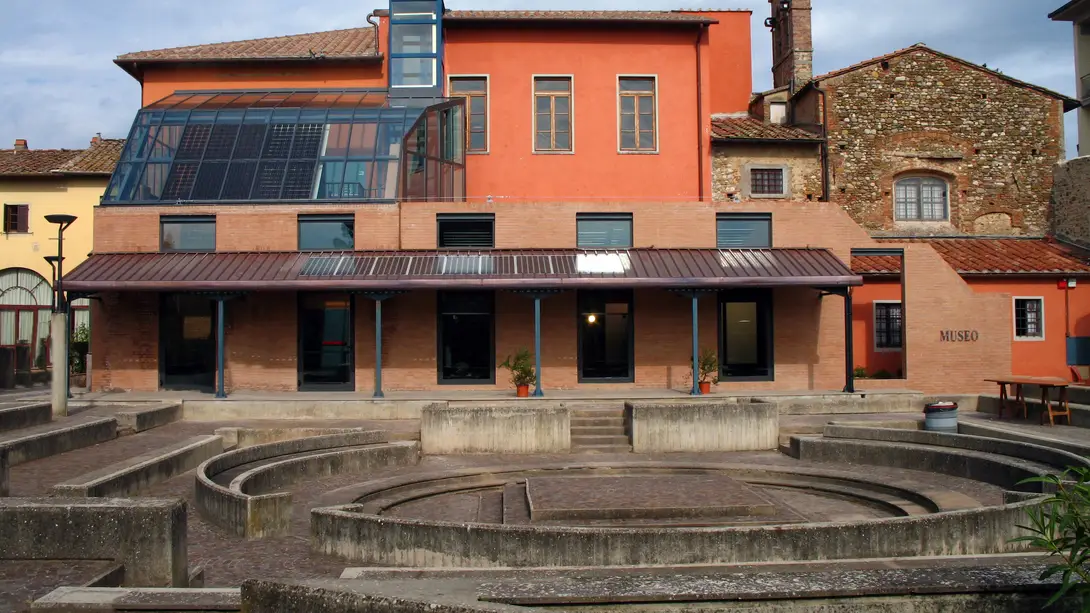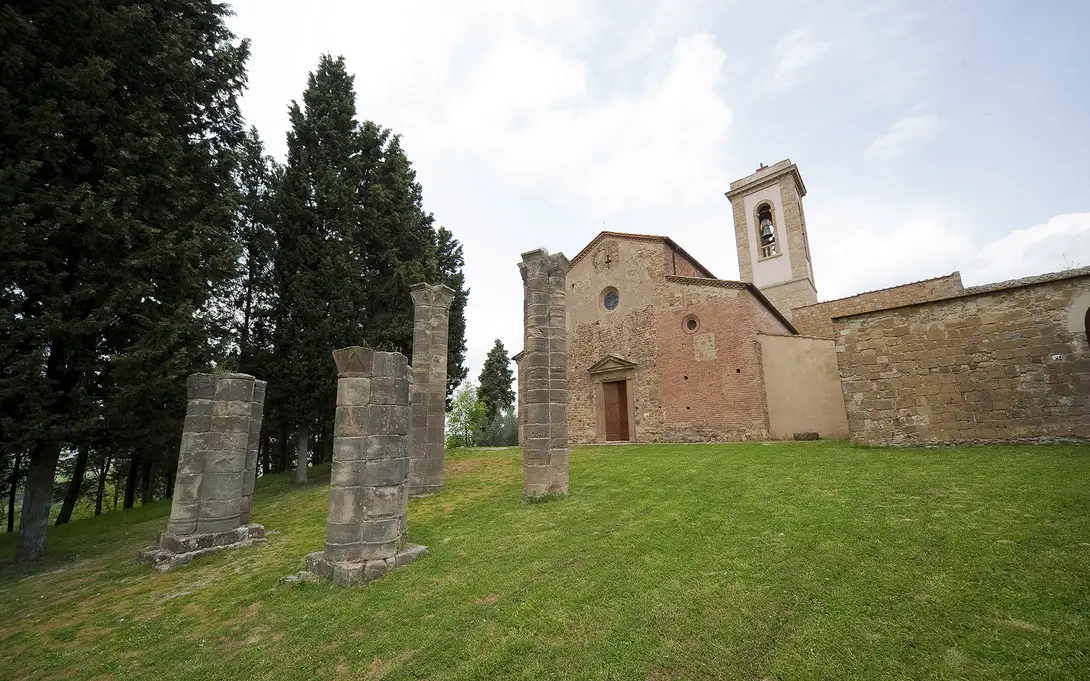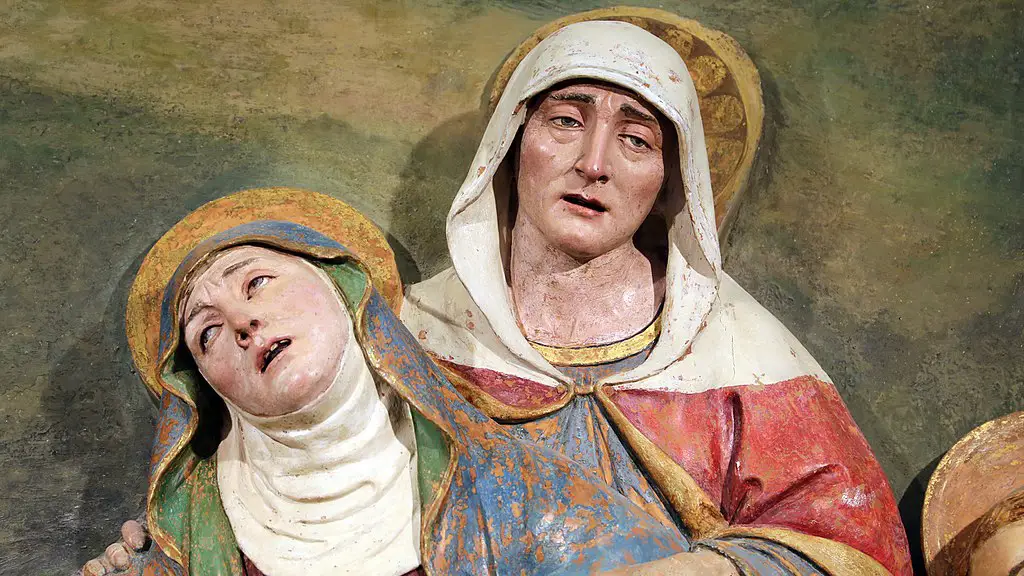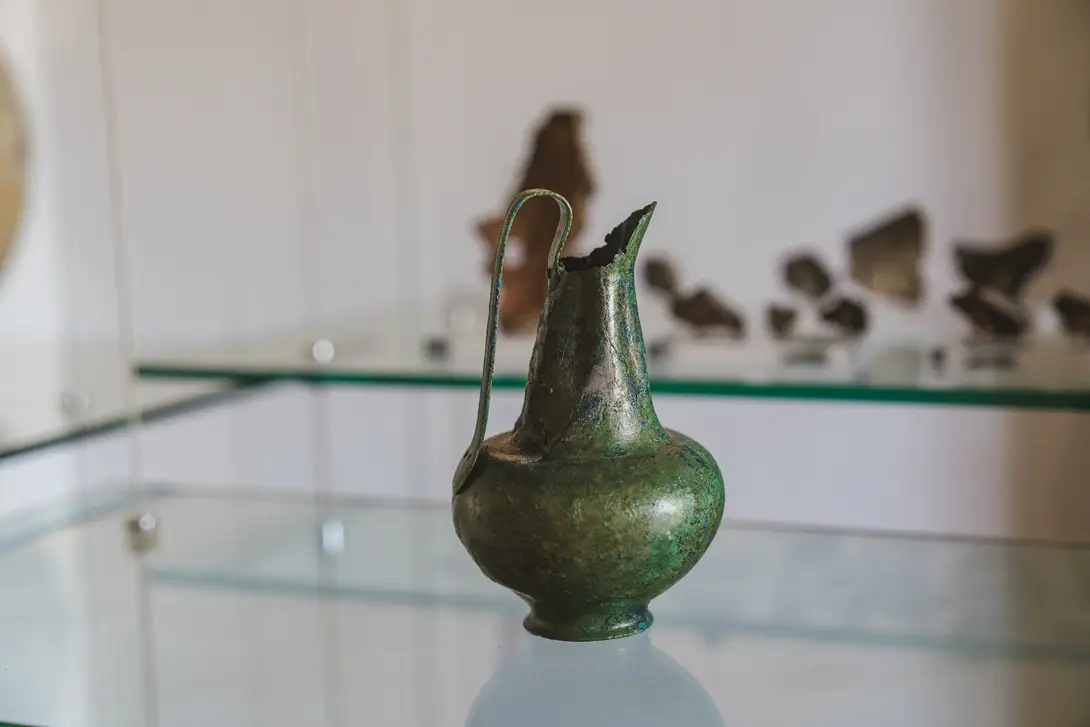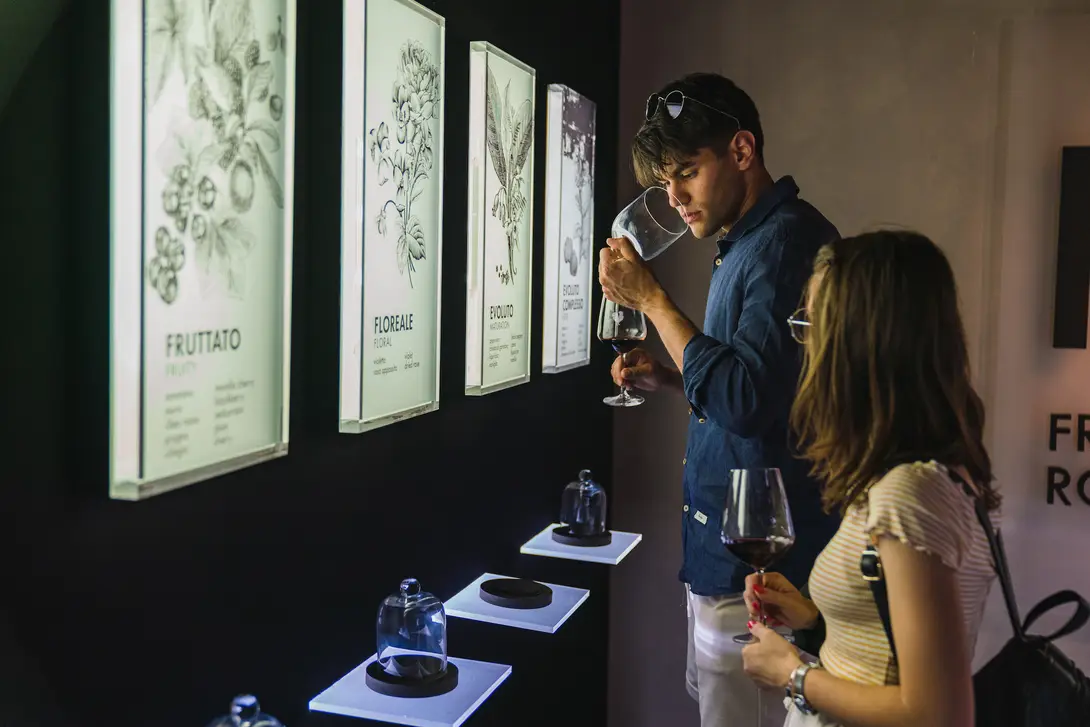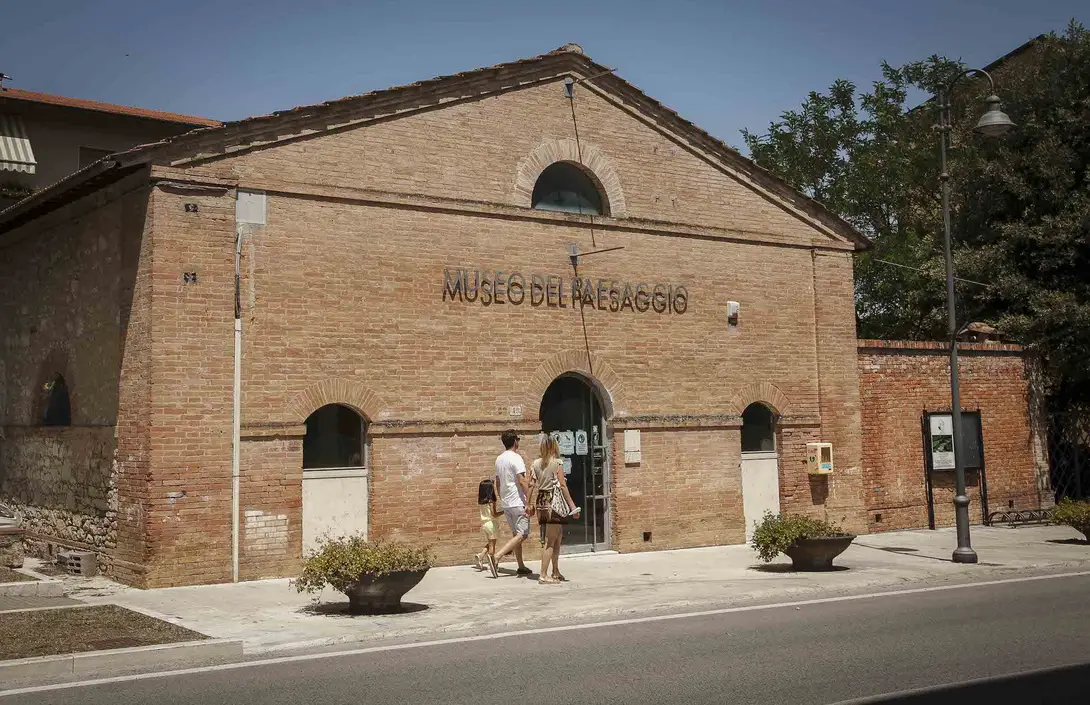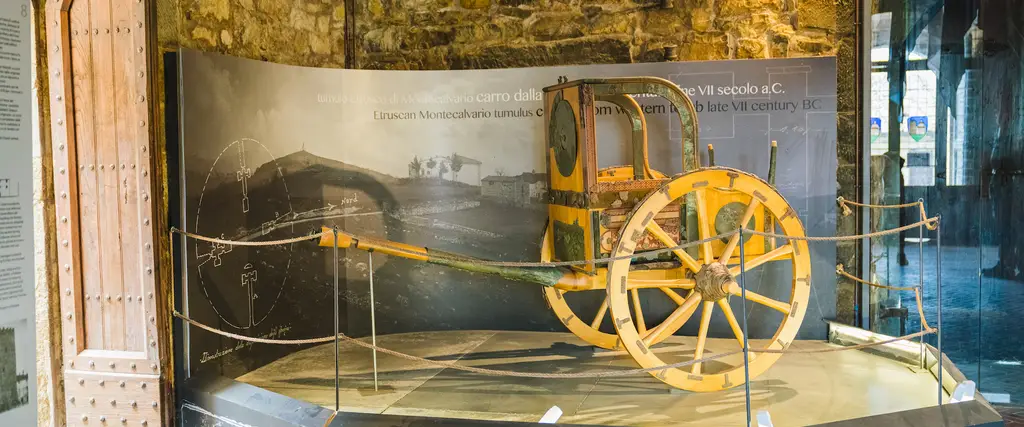
Discovering the Chianti museums
Nature, hamlets and flavours: these are the elements that have always characterised the image of Chianti in the world. Yet this is a land also rich in history and culture, as testified by important museums in the area.
Here is an itinerary to discover the main museums in the Chianti area, on a journey through its 6 municipalities.
San Casciano Val di Pesa and the Museo Ghelli
We begin our journey in San Casciano Val di Pesa, not far from Florence. Here in the heart of the village, inside the church and convent of Santa Maria del Gesù, is the Museo Giuliano Ghelli. Composed of three sections, the museum ranges from sacred art to archaeological art to the more recent contemporary art section. The latter, in particular, is dedicated to a selection of works produced by artists mostly active in the Chianti region, starting with Giuliano Ghelli himself, and hosted over the years within the Museum spaces.
Barberino Tavarnelle and Antiquarium Sant'Appiano
From San Casciano Val di Pesa we move on to Barberino Tavarnelle. Here, housed in the premises of the parish church of Sant'Appiano, is the Antiquarium, which boasts a collection of archaeological finds, from antiquity to the Middle Ages, unearthed during excavation campaigns in the areas of Sant'Appiano, San Martino ai Colli and Semifonte. The exhibits include a red-figure 'kelebe' (columned crater) from the 4th century B.C. and an alabaster urn from the Hellenistic period with a relief of the Rape of Proserpine. The only painting on display in the museum is the panel depicting the Madonna and Child with Saints John the Baptist and Anthony of Padua, painted by the Master of Signa in the first half of the 15th century.
Greve in Chianti and the Museo di San Francesco
We reach the heart of Chianti, Greve. Housed in the spaces of the former Oratory of San Francesco is the Museum of Sacred Art with paintings, sculptures, wall hangings and jewellery from the churches in the area. Among the works on display is the large polychrome terracotta altarpiece depicting the Lamentation over the Dead Christ from the workshop of Baccio da Montelupo, datable to the early 16th century, as well as the small 14th-century panel of the Annunciation from the Church of Santa Croce in Greve. Before leaving the museum, enjoy the view from the terrace overlooking Greve in Chianti and the surrounding hills.
Castellina in Chianti and the Museo Archeologico Chianti
From Greve we move to Castellina in Chianti, where one of the most famous museums in the area is located: the Museo del Chianti Senese. Housed inside the medieval fortress, the museum tells the ancient history of Chianti through archaeological finds collected in the territory of the four municipalities on the Sienese side: Castellina, Gaiole, Radda and Castelnuovo Berardenga. A journey through time that starts 4000 years B.C. and goes all the way back to the Middle Ages. A visit to the museum also includes the tower from which there is an evocative view of the village and the Chianti mountains.
Radda in Chianti and the Casa del Chianti Classico
Just outside the village of Radda, inside the prestigious 18th-century convent of Santa Maria al Prato, is the Casa del Chianti Classico. It is here that it is possible to follow a sensorial path that allows one to learn about the history of Chianti Classico wine and its characteristics. It is not a traditional museum, therefore, but an experiential path among installations and interactive themed rooms among colours, perfumes and taste. The route can be done independently or with guided experiences that include tastings of Chianti Classico and local products.
Castelnuovo Berardenga and the Museo del Paesaggio
The last stop on our journey is Castelnuovo Berardenga, on the outskirts of Siena. Here you will find the most recent museum in the Chianti region, opened in 1999 and continuously evolving since then. The Museo del Paesaggio landscape museum is housed in a late 19th-century building used until a few decades ago as a public slaughterhouse. It is equipped with interactive devices that help to learn about and explore the relationship between landscape, art, architecture and literature. Completing the visit is the Archive of Memory, which collects testimonies and documents on the history and development of the Chianti landscape.
The places
Stages
Giuliano Ghelli Museum of San Casciano
The Museum is situated inside the Church of Santa Maria del Gesù, built in the mid-15th century and then remodelled at the beginning of the 17th century and in the building next. It contains original works from the church, including a Madonna and Child by Lippo di Benivieni. Other paintings are from local churches, such as the Coronation of the Virgin by Neri di Bicci. The finest works, from the Church of Vico l’Abate, are a frontal altar depicting Saint Michael the Archangel (mid-13th century),attributed to Coppo di Marcovaldo, and aMadonna and Child (1319) by Ambrogio Lorenzetti. The collection also includes 14th-century gold-ground panel paintings,liturgical furnishings and hangings.
Antiquarium di S. Appiano
The Antiquarium adjoins the Parish Church of Sant’Appiano, rebuilt in the Romanesque age over an earlier building and housing a series of Florentine School frescoes from the end of the 15th century.
The Antiquarium has various archaeological finds from the surrounding area, including: Etruscan grave markers(cippi); alabaster funerary urns from the Hellenistic Age; red-figure Attic ceramics; and medieval and Renaissance ceramics from the Florence area.
The church is preceded by the remains of the baptistery.
Museum of Sacred Art San Francesco
Located in the former convent of San Francesco, built in the first half of the 16th century as a hospice for Franciscans travelling between Florence and Siena, the museum houses a collection of paintings, sculptures and liturgical hangings from the 13th–19th centuries. Of particular note is a 16th-century Lamentation over the Dead Christ in polychrome terracotta, attributed to Baccio da Montelupo, and a small group of sculptures, two of which date to the first half of the 15th century. The archaeological section includes items from the Etruscan, Roman and medieval ages found in the local area.
Archaeological Museum of the Sienese Chianti
Located inside the fortress of Castellina in Chianti, the museum houses artefacts found in the Etruscan archaeological sites in the municipalities of Castellina, Gaiole, Radda and Castelnuovo Berardenga, which bear witness to the history and evolution of this ancient civilisation.
On display in the showcases are objects from the grave goods found in the burial grounds of Montecalvario and the necropolis of Fonterutoli: cups, amphorae, vases, as well as votive bronzes, fragments of sculptures and a reconstruction of the precious chariot covered with decorated metal sheets from Montecalvario.
The visit also includes the rooms of the fortress, a 15th-century fortification of the Florentine Republic, including the climb to the patrol walkway from which there is a wonderful panorama of the Chianti hills.
Casa del Chianti Classico wine museum
In Radda in Chianti, on the premises of the 18th-century convent of Santa Maria al Prato, the Casa del Chianti Classico offers routes and experiences for lovers of good wine.
In the Il Convento wine shop, a didactic and sensorial itinerary informs about the history of Chianti Classico and its territory, created for the promotion of the Chianti area and all its expressions, productive, artistic and cultural ones. It also has spaces for events, exhibitions and ceremonies, and organises and hosts in-depth wine courses and cooking lessons.
Museo del Paesaggio landscape museum
In Castelnuovo Berardenga, in a 19th-century building originally used as a slaughterhouse, the Museo del Paesaggio landscape museum was reopened with a completely new look in 2020.
The museum describes the economic and anthropic aspects of the region's landscape through everyday objects, such as a window, a table, a cupboard, binoculars, which become interactive multimedia applications.
The visit is complemented by a series of mobile devices that can be used to explore the relationship between landscape, art,architecture and literature, as well as an olfactory station, a didactic section and a space where local wines can be tasted with a view to knowledge and promotion of the territory. The visit is completed by the consultation area dedicated to the Archive of Memory, which collects testimonies and documents on the history and development of the Chianti landscape, and by a large space on the first floor for temporary exhibitions.
